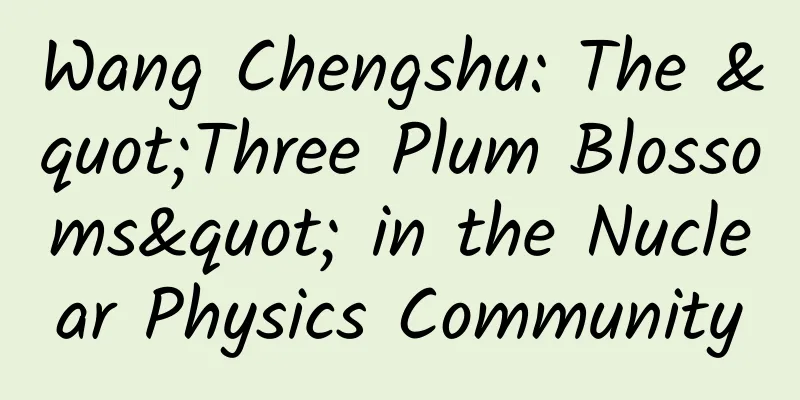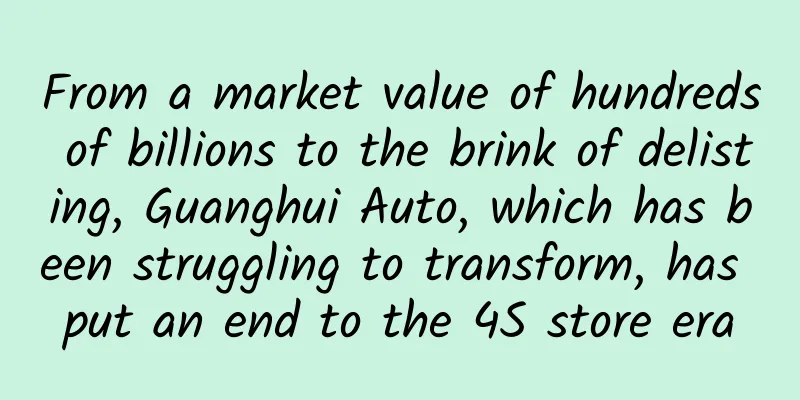Wang Chengshu: The "Three Plum Blossoms" in the Nuclear Physics Community

|
*Academician Wang Chengshu Memorial Hall The Nuclear Industry Physical and Chemical Engineering Research Institute was founded in 1964. It is the only research institute in my country engaged in the research of uranium isotope separation technology and special equipment. It has successfully developed various types of equipment and special equipment with independent intellectual property rights and realized industrial application, making outstanding contributions to the development of my country's nuclear industry. Interior of Academician Wang Chengshu Memorial Hall-1 Interior view of Academician Wang Chengshu Memorial Hall-2 The Memorial Hall of Academician Wang Chengshu covers an area of 500 square meters, and the supporting facilities area is 4,827 square meters (including a square of 4,260 square meters, a lobby of 337 square meters, and a lecture hall of 230 square meters). The overall vision of the memorial hall is broad, independent, with clear exhibition area division and exhibition design, telling the glorious deeds of Academician Wang Chengshu through text, pictures, objects, multimedia and other means. The memorial hall has a strict management system and a professional team of interpreters, and is committed to building a base for promoting the spirit of scientists and patriotism education. It has successively organized the "Eternal Life-Academician Wang Chengshu Special Exhibition" activity, and organized the original drama "Wang Chengshu" for more than 20 performances. Wang Chengshu is a nuclear physicist, engineering physicist, and academician of the Chinese Academy of Sciences. She is the founder of theoretical research on uranium isotope separation in my country, and made important contributions to the successful explosion of my country's first atomic bomb and the development of uranium enrichment technology. She changed her major three times for the country in her life, just like the ancients chanting plum blossoms, and the charm of nobleness, strength, and modesty bloomed in the "three variations". First bloom: Miss Wang Er stands out Just after the rumbling of the gunfire of the Revolution of 1911, a baby girl was born in a scholarly family in Shanghai. Her father, who was born as a Jinshi, named her Wang Chengshu after the Book of Documents. She was smart and opinionated since childhood, and had a special liking for numbers. She could sort out all the accounts in an orderly manner. The housekeeper joked that she was the second young lady who was good at math. In 1930, Wang Chengshu entered the Department of Physics of Yenching University with excellent grades. As the only girl in the class, her grades were always at the top. During her time at school, the school had to eliminate students every year, and only four people were left before graduation. She graduated with excellent grades and stayed on to teach at the school. After that, she spent another two years studying for a master's degree until the gunfire at Marco Polo Bridge forced her to leave Beijing and travel around. Wang Chengshu once recalled that it was her dissatisfaction with imperialism, reactionary warlords and reactionary governments during her student days that cultivated her strong nationalist ideas and sense of justice. Wang Chengshu loves skirts that symbolize women's progress (picture from the Internet) During her time at Southwest Associated University, she learned that the University of Michigan's Balbo Scholarship Program did not meet the funding requirements for Wang Chengshu, who was married. Unconvinced, she wrote a letter to the committee to explain her personal situation. In view of Wang Chengshu's excellent academic performance, she received an admission notice and studied with the international physics authority Uhlenbeck on gas transport theory. Blooming: A rising star with a bright future When the cheers from Tiananmen Square came, Wang Chengshu had already graduated with a doctorate and started to engage in scientific research. She and her husband Zhang Wenyu (a member of the Chinese Academy of Sciences and a high-energy physicist) were both banned from returning to China by the US government, so they could only wait for an opportunity. In 1951, Wang Chengshu and her teacher Uhlenbeck created the "WCU (Wang Chengshu-Uhlenbeck) equation" named after their surnames. This formula, which is still used by the scientific community today, caused a sensation in the world once it was published; afterwards, she proved the Sonnen polynomial, which shocked the academic community again. Uhlenbeck praised her many times as an "amazing talent." Wang Chengshu and her husband (picture from the Internet) "Although China is poor and the conditions for scientific research are poor, I cannot wait for others to create the conditions. I must personally join the ranks of creating conditions and paving the way. My career is in China." Faced with his teacher's retention, Wang Chengshu was very determined. In 1956, Wang Chengshu, who had just returned to China, did not even clean up his messy home, but immediately started working according to the requirements of the organization. At that time, my country decided to vigorously develop the atomic energy industry, and isotope separation was the key. The 44-year-old Wang Chengshu resolutely gave up his outstanding achievements in statistical physics and thermodynamics and came to the Institute of Modern Physics of the Chinese Academy of Sciences to engage in theoretical research on uranium isotopes. The word "changing career" is simple to say, but only those who engage in scientific research understand the determination and disregard for fame and fortune behind it. And Wang Chengshu had to do this twice. Wang Chengshu at work (picture from the Internet) In 1958, my country started to study controlled thermonuclear fusion. Qian Sanqiang, then deputy minister of the Third Ministry of Machine Building, approached Wang Chengshu and hoped that she would organize the study. Wang Chengshu accepted the task without hesitation. In order to quickly familiarize herself with the new field, she taught herself Russian and led her colleagues to study in the Soviet Union. On the train back to China, she translated "Sherwood Plan - American Work Plan for Controlled Fusion", which has been an important book in my country's thermonuclear fusion field for a long time. With her extraordinary talent and hard work, Wang Chengshu quickly became a leading figure in my country's thermonuclear fusion field and trained the first batch of related scientific research talents. When everyone expected her to conduct more in-depth research, she "disappeared". Hidden Fragrance: Disappeared for Half a Century In 1961, when my country's atomic bomb development entered a critical period, the Soviet Union withdrew all experts and destroyed all materials, leaving only the factory buildings and machines that could not be dismantled. Qian Sanqiang once again asked Wang Chengshu to consider whether she was willing to change her career for the country, and she agreed without hesitation. The content of uranium-235 in uranium ore is only 0.7%, and it must be continuously enriched by thousands of machines to obtain the atomic bomb charge that meets the use requirements. Wang Chengshu didn't understand it at first, so she could only find three notebooks that others had learned from Soviet experts, and continued to study and calculate... Through hard work, Wang Chengshu and his team finally provided a high-concentration charge for the first atomic bomb, 113 days ahead of the original design. Nine months later, the sound of an atomic bomb explosion was heard in the Gobi Desert. For half a century, she took off her favorite long skirt and put on coarse cloth clothes; left her young son and lover, and rushed between the office and the Gobi Desert; she never published a paper in an academic journal, and even refused to sign her name when proofreading her students' works. Wang Chengshu in his later years (picture from the Internet) On June 18, 1994, she passed away peacefully. Her body was donated to a medical research unit, her books and materials were given to the North China Institute 605 (the predecessor of the Nuclear Industry Physical and Chemical Engineering Research Institute), her savings of about 100,000 yuan were all donated to the "Hope Project", and the 7,222.88 yuan she withdrew from her savings was used as her last party dues. Wang Chengshu returned in the "winter" when the country was waiting to develop, burning her life and talent, and then disappeared when the "spring" came, quietly guarding the country's nuclear industry until her petals turned into spring mud. Her spirit continues to nourish and encourage generations of people to remain committed and dedicate themselves to the country. (Guangming Daily Omnimedia reporter Zhang Xiaohua) |
<<: Will AI understand the universe better than humans?
>>: What is so mysterious about Daliang Mountain, the prototype of "In the Octagonal Cage"?
Recommend
Tonga's submarine volcano erupted and many countries issued tsunami warnings! Will it affect China?
The current situation in the South Pacific island...
Reno: OPPO's new breakthrough, the side-rotating camera is just the beginning of surprises
As an electronic consumer brand dedicated to maki...
Einstein's brain has 73% more matter than an average person! Scientists reveal the secret of a smart brain
When you mention the word "genius", who...
Will eating too much MSG give you a headache? "MSG is misunderstood" sparks heated discussion
If salt is the saltiest seasoning in your home, t...
Car owners want to defend their rights again? Tesla cuts prices again after half a month: Model X/S drops by up to 150,000 yuan
Tesla released a new Model S/X price adjustment p...
The tenth episode of the Aiti Tribe Clinic: How to learn Python? The method is very important
【51CTO.com original article】 Activity description...
The uncle suddenly changed from being diligent to being lazy, and it turned out to be because of this...
Grandpa Zhang, who has been raising cattle and sh...
Why do companies rely on Baidu bidding hosting today?
Why businesses rely on Baidu hosting today With t...
Tianlai Karaoke Co-founder Hao Jie: Big screen life connects happiness
On the afternoon of October 14, a sub-forum entit...
New research: Are the sugar-free drinks we drink every day actually "attacking" our blood vessels?
In today's society where health awareness is ...
Huawei Honor 6 Indian media review: Reawaken your iPhone 4 memories
According to reports, Huawei Honor 6 has recently...
Practical cases will help you master the headlines information flow!
This article mainly briefly introduces the backgr...
Make Flyme more down-to-earth YunOS version Meilan system experience
The launch of Meizu Blue allowed Meizu to officia...
iOS 9 Human Interface Guidelines: UI Design Basics
1.1 Designing for iOS iOS embodies the following ...









